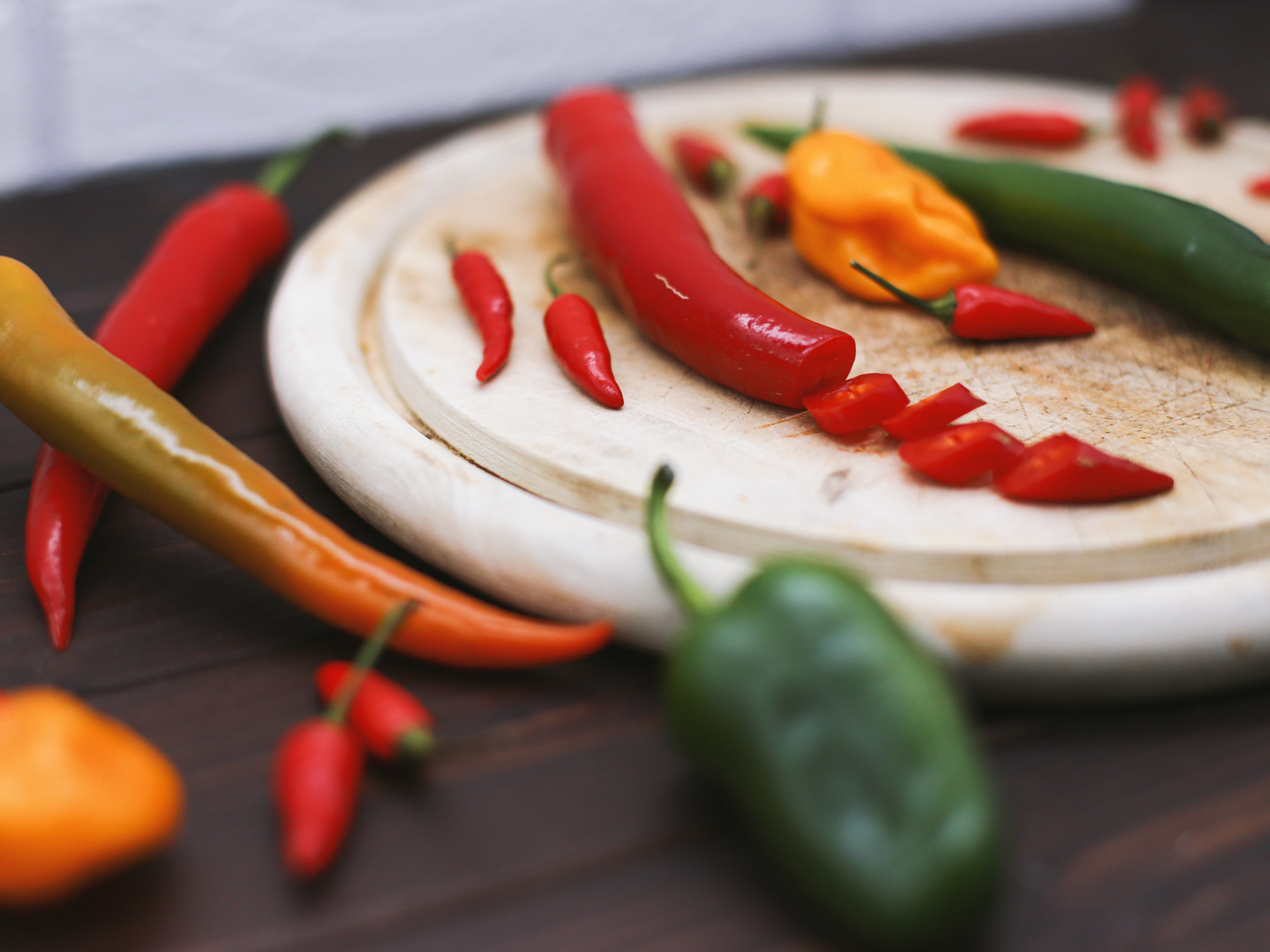Chilies or capsicums, as some folks call them, are members of the nightshade family, with others being potatoes, eggplants and tomatoes. The word ‘pepper’ is a popular culinary term and it’s used when talking about different plants and their parts: chilli pepper, black pepper, Sichuan pepper, pink pepper, rose pepper, African pepper and others, although there is no botanical relationship between all of them.
Chili peppers are one of the oldest cultivated crops in the Americas, originating in Mexico. There are hundreds of them, from mild Mexican green chili to super hot Pepper X (that has been intentionally crossbred to make it the hottest pepper in the world, but this fact still remains unconfirmed by Guinness World Records as of 2020). They are fruits, botanically speaking, that come in a cornucopia of colours: black, red, purple, yellow, green, white and textures: whole, fresh, dried, powdered, pickled. When Christopher Columbus first encountered capsicums, he called them ‘peppers’, because they have a pungent kick to them. Since then we call them peppers even though they bear no resemblance to black pepper.
Chilies are hot because of the capsaicinoids, with capsaicin being the most abundant compound. The quantity, however, greatly varies, depending on the growing conditions and the type of the fruit. Basically, plants produce capsaicin as a means of self-defence against predators, microbes and fungus, but people have learned to enjoy the irritating sensations that chilies give us. The intensity of heat is usually measured in Scoville heat units (SHU). To better understand the meaning of it, take zero heat bell peppers and compare them to 30.000-50.000 SHU of cayenne pepper. And then simply try to imagine and comprehend the impressiveness of Carolina Reaper 2.2M SHU, or Dragon’s Breath 2.4M SHU, or Pepper X 3.18M SHU. These highly potent hybrids are among the hottest chilies of the planet, they were cultivated during an informal race to grow the ‘super-hots’, that is over 1.000.000 Scoville units. But generally, chilies used in common dishes usually fall between 100K-500K SHU range. That’s more than enough to cook a proper kung pao chicken, Thai curry, mole or pepper soup. The latter is the well-known preparation in West African cuisine. It’s considered a delicacy but it’s basically just a chicken broth with onion, garlic, chilies and spices that you easily can whip up in a matter of minutes. Spice it up.











What do you think?